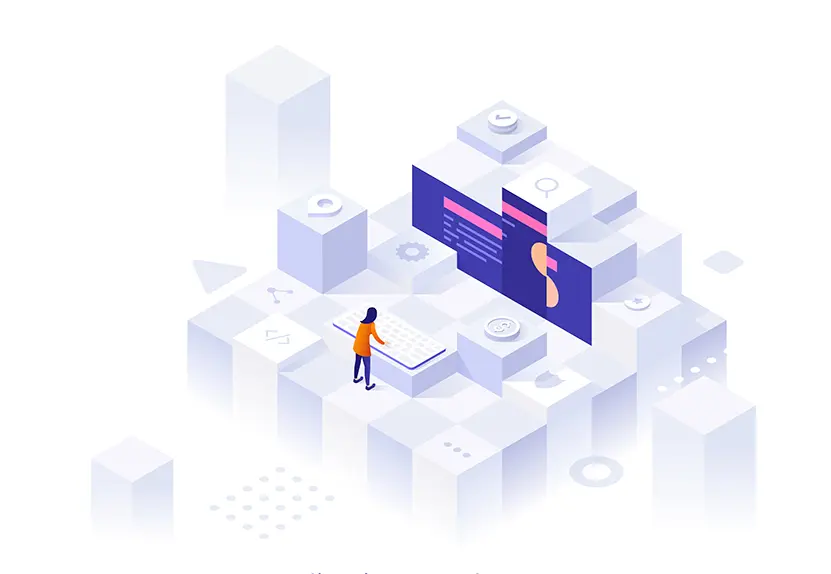How DevContentOps Enables Composable Applications

Mike Vertal

The rate at which business is changing today and the continued adoption of digitally-focused tools have made it difficult for organizations with outdated infrastructure to keep up. According to McKinsey, “adaptability is the critical success factor during periods of transformation and systemic change.”
Modern businesses are on the hunt for tools and processes that help them to be adaptable and maintain their resiliency in the face of quickly changing market conditions and unforeseen risks. The software stack and underlying architecture your technology ecosystem is built on can either improve or hinder that resilience. As a result, achieving resilience requires organizations to embrace software that allows them to be agile without restrictions.
Composable applications can provide this level of agility, but many organizations are unaware of how to measure and achieve composability. Luckily, with the support of a Git-based CMS like CrafterCMS and its support for DevContentOps processes, it is possible to build composable, content-driven digital experiences.
What Is a Composable Application?
A composable application is a solution made up of modular blocks that can be assembled in different ways to meet the needs of a business. Composability ensures that an application can be easily adapted to meet changing requirements. It allows that application to be ready for fast, safe, and efficient change in order to meet the growing need for businesses to be efficient, resilient, and adaptable.
With the wealth of market opportunities and the emergence of threats, applications need to be designed with composability in mind. Composable applications use APIs to transfer information and data between applications so that separate applications can be combined into one system.
Watch Video: CrafterCast Episode 5 Composable Business Applications
While monolithic systems were built to support a specific use case, composable applications offer the flexibility for a wider range of use cases and outcomes, even ones that might not have been originally considered.
Why Composability Is Necessary
Composable applications are necessary for businesses to compete in today’s technology-driven environment, not only due to the need to be adaptable but also due to the benefits they provide. According to Gartner, “by 2024, the IT costs of managing SaaS operations will be halved as a result of the adoption of composable application architectures.” Businesses that are able to adapt and organize composable applications effectively will gain a competitive advantage as they will be able to change, grow and adapt to any external events, even unexpected occurrences that radically shift markets.
Why Embracing Composability Can Be Challenging
Composability is necessary for the future of digital applications, but it can be challenging for many businesses to incorporate. While it increases flexibility, composable also strains the standard IT and DevOps processes.
Current practices tend to be focused on clear projects with known use cases. In order to embrace composability, businesses need to “upgrade agile and DevOps processes to prepare for the contrast between microservice APIs and productized, composable APIs or clusters of APIs,” according to Gartner. In order to achieve this, businesses need to prepare for composability.
How to Prepare for Composability
The first step in preparing for composability is to understand its core attributes. Gartner has highlighted “the four core tenets of the Gartner Composable Business Index, applied to business software, drive the consistency of the composable enterprise application experience: modularity, autonomy, discovery and orchestration.” Let’s break them down:
- Modularity: Components within a composable application should have a singular, clear and complete business identity. The independent building blocks that makeup any composable application should be small enough that they allow businesses to remain agile but large enough to be standalone services.
- Discovery: The concept of composability is meant to support the needs of both business and IT teams. Discovery readiness entails that teams should be able to easily identify and access components and documentation and include them in solutions.
- Autonomy: Modular building blocks need to be easily changeable and self-contained, unlike with monolithic applications, where any change to one section impacts the entire system.
- Orchestration: Orchestration readiness refers to how open an application is to interacting with other applications and also includes a measurement of its security and governance capabilities.
Understanding the tenets of composability provides organizations with a foundation to strategically plan their technology decisions so that they can find or build systems that leverage the right architecture, processes and teams.
How CrafterCMS and DevContentOps Enable Composable Applications
CrafterCMS provides a strong foundation for building composable applications through its truly modular architecture, beginning with its decoupled architecture that separates the content authoring and delivery systems, both of which are API-first headless platforms. This allows both content authoring experiences, and end-user digital experiences, to be easily composed and tailored for a wide variety of use cases. Typical use cases include large-scale personalized websites, content-rich e-commerce experiences, customer portals, employee intranets, mobile apps, AR/VR experiences, digital signage, and OTT video streaming applications.
CrafterCMS can act as the centerpiece of composability within your tech stack and empowers developers and content authors, enabling them to operate independently without getting in each other’s way, but also to collaborate as needed through DevContentOps processes.
DevContentOps is an approach that facilitates the fast and seamless delivery of CMS-powered software applications. Organizations familiar with DevOps culture will understand that it allows them to streamline their critical workflows while enhancing customer experiences, stability, and reliability of workflows. New features and functionalities can be inculcated into the pipeline without causing any bottlenecks.
CrafterCMS takes DevOps support even further by helping enterprises create and manage content-driven software products, applications, and digital experiences. CrafterCMS and its distributed Git-based content repository enables DevContentOps processes, allowing product development teams to work in a seamless collaborative environment alongside content authors. This accelerates the release pipeline as enterprises can continuously release new features, launch content updates, and provide immersive digital experiences to customers.
For example, push and pull operations enable teams to propagate code from development to integration to testing/QA/staging to production environments, without disturbing content authoring and publishing activities. Alternatively, they can also pull content from production environments down to lower environments and developer machines, so software development is always working with the latest production content seamlessly. DevContentOps processes enabled by CrafterCMS’s API-first content authoring and content delivery platforms feature easy integration with the latest tools and technologies to allow you to automate development processes and seamlessly interoperate CI/CD tools and pipelines.
With DevContentOps, IT operations, software development and content teams aren’t left siloed and can truly collaborate. The software development life cycle for building reusable, modular components is shortened, enabling easier integration of composable applications through frictionless development. Also, teams can be integrated together, allowing you to create applications in a composable manner, tailored to different roles in the organization and different use cases, faster than ever before.
Discover more about DevContentOps and its benefits in our White Paper: What Is DevContentOps?
Related Posts

Is Your CMS MACH-Ready? A Practical Guide for Enterprise Architects

Sara Williams

Composable DXP vs Traditional DXP: Why Enterprises Choose CrafterCMS

Amanda Jones

Connecting Content and Campaigns: Integrating CrafterCMS with Salesforce Marketing Cloud

Sara Williams

From Content Author to AI Co-Creator: The Next Evolution of CMS Workflows with MCP

Amanda Lee










